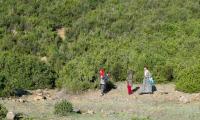Now that the budget season is over, and reams have been written on how good or bad the federal or provincial budgets have been, it would be good to review how strategic planning and inclusive budget-making processes makes for better service delivery. Sometimes in the times of sensationalized news, thrill laden talk shows and social media scandals, the good news is lost.
The Punjab budget 2020-21 has been hailed for its private-sector friendly approach, inclusivity and social sector development allocation. The highlight, however, has been Punjab’s Covid-19 response strategy and the associated budgetary allocations according to it.
Covid-19 proved to be not just a humanitarian crisis but an economic one too, and governments the world over have struggled to respond to it. Many governments have not been able to respond adequately or in a timely manner due to the continuously evolving nature of the virus, while others have struggled with the economic implications of the pandemic on national and sub-national economies.
The Punjab government, within four weeks of Covid-19 becoming a threat in the country, devised the Responsive Investment for Social Protection and Economic Stimulus (RISE) Framework. Crucial areas of health, governance, economic response and recovery, education, disaster risk financing, social protection with an emphasis on women and the most vulnerable, and risk communication were covered in the framework.
The most important part of this strategy was the valuable critique of the challenges on the response to the pandemic and immediate, medium- and long-term actions to mitigate risks and save lives and livelihoods. The live document has also been updated with feedback from citizens, civil society, academia, practitioners, experts, government officials and development partners.
Strategies like these might be plenty in the government which are forgotten soon after the initial hoopla, but the best part of the RISE framework was that it was followed through.
RISE informed Punjab’s Annual Development Programme and the budget-making exercise. It formed the basis of evidence and projection-based tax relief for businesses, enhanced health-sector allocations, increased support to MSMEs, specific social protection initiatives, and vital Covid-19 related provisions. A separate allocation for districts to handle Covid-19 is a welcome step in strengthening the grassroots.
Now coming to the budget process. Budget-making exercises are highly technical and, to the uninitiated, cumbersome. Long-drawn out excel sheets, numbers with too many zeroes, a language that only public financial management experts understand, and conversations around allocations and expenditures which is almost Greek to those who are not well versed in the topics. To simplify and make the budget easier to understand is one of the important tasks of the government.
The Open Budget Index (OBI), a widely used index to measure transparency and openness of budgets, prescribes benchmarks of budget documentation and budgetary processes. The index requires the governments to publish eight key budgetary documents, and lays down the required information to be provided in each of the documents and the appropriate time of the financial year to publish these documents. Similarly, it requires governments to complete a number of processes that help make the budget participatory and inclusive.
The Citizens Budget is one of the documents assessed; it is a non-technical presentation to enable a broad public understanding of the complex budget terminology as well as provide accountability for the government’s plans through the eyes of the citizens.
Punjab and Khyber Pakhtunkhwa were the first two sub-national governments to come out with citizens' budgets in 2104 as a part of the reforms under the Sub-National Governance Programme. The good thing is that the reform was institutionalized and both provinces now regularly publish the citizens' budget.
This year too, the Punjab government came out with a citizen’s budget and made an extra effort to reach out to the maximum people by introducing BOLTA BUDGET – an animated and audio-video version of the citizens’ budget book.
In addition to this, as a pre-budget exercise, the Punjab finance department invited feedback from citizens for key areas of budgetary allocations and incorporated the feedback which fed into various sectoral allocations. Efforts like these are commendable and need to be sustained because when citizens can contribute to and understand the budget better, they will be able to track progress on allocated resources better.
Several reform interventions are needed to work towards policymaking that is inclusive and participatory and systems where tracking public expenditures and related information is easier and accessible. Improving and introducing reforms in the planning and public financial systems of government is tough but essential. When these reforms are institutionalized it leads to a better citizen experience and service delivery, and helps build trust between the state and the citizen – which is of primary importance for effective governance.
The writer is a communications strategist.
There are over 11 million Pakistanis settled abroad, out of which around six million work in Gulf and Middle East
This year alone, US Treasury would have to roll-over $10 to $14 trillion in maturing short-term debt
Tear gas no longer marks just protest sites; it paints entire cities as battlegrounds but then again, PTI did it first
Political structures and governance systems have been central to economic and social development
It is confirmed now 40 Pakistanis had died after boat of migrants had capsized in sea near Greece
Many people believe that in future, AI will play an even more significant role in their lives







